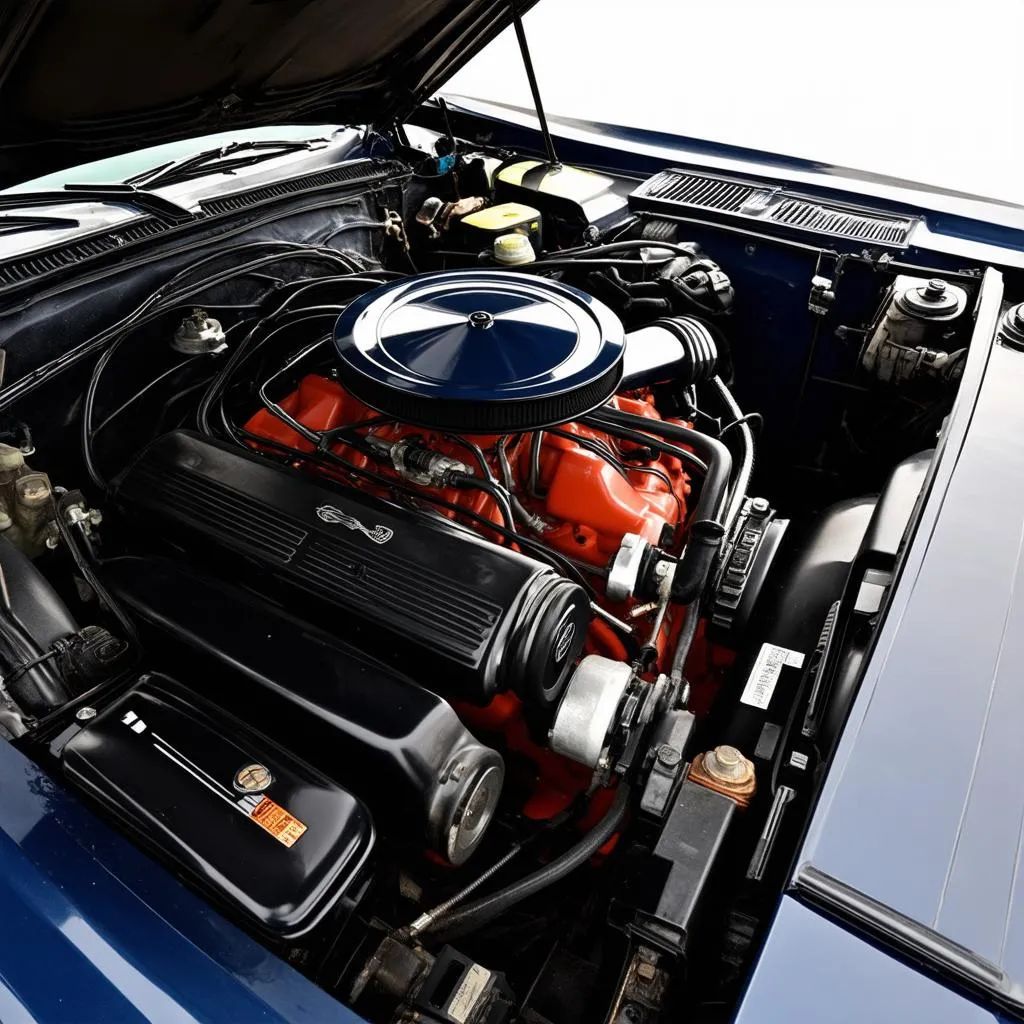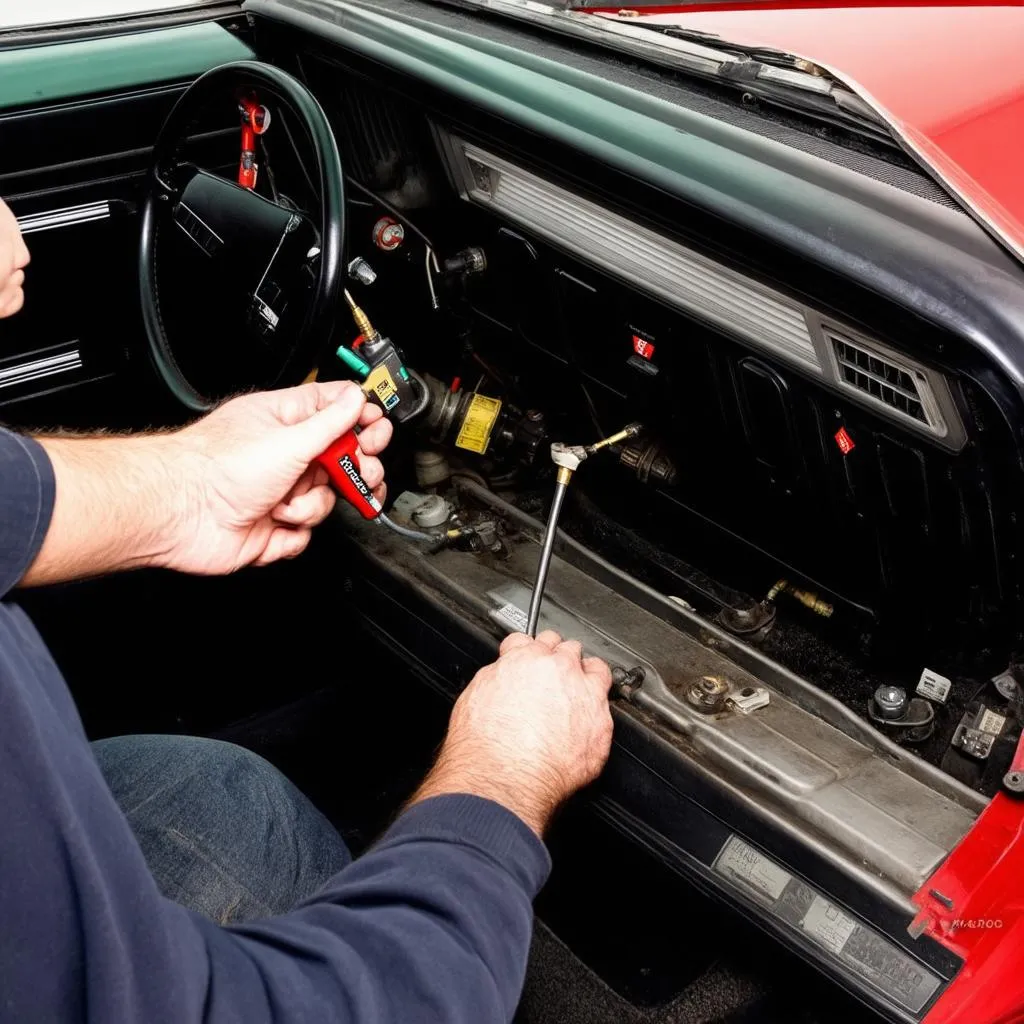“If this car could talk, it would tell some stories,” my uncle chuckled, patting the hood of his cherry-red 1987 Mustang GT. He was right – the Mustang had seen it all. But unlike today’s cars that practically speak to you with their onboard diagnostics (OBD), understanding a classic car’s woes required a different kind of intuition. So, how do you decipher the cryptic language of a 1987 Mustang when it starts acting up? Let’s dive into the world of pre-OBD diagnostics and understand what makes these classic steeds tick.
The 1987 Mustang and the Dawn of OBD
The term “1987 Mustang Obd” often sparks confusion. Why? Because the standardized On-Board Diagnostics system we know and rely on today (OBD-II) didn’t come into play until 1996. This means our 1987 Mustang actually predates this universal system.
Unraveling the Pre-OBD Era
Does that mean your 1987 Mustang is a complete mystery when it comes to diagnostics? Not at all! While it lacks a standardized OBD-II port, it still has ways of communicating its mechanical state.
Here’s what you need to know:
- Early Electronic Engine Management: By 1987, the Mustang GT was equipped with Ford’s EEC-IV (Electronic Engine Control) system. This early form of engine management utilized sensors to monitor aspects like air intake, engine speed, and throttle position.
- Rudimentary Diagnostic Codes: While not as comprehensive as later OBD systems, the EEC-IV could store and display rudimentary diagnostic trouble codes. These codes provided clues about potential issues within the engine management system.
- Self-Test Procedures: The 1987 Mustang often featured self-test procedures that could be initiated through specific actions, like jumpering certain pins on a diagnostic connector located under the dash or hood.
The Quest for the Right Tools
To tap into your Mustang’s diagnostic capabilities, you’ll need the right tools. Forget generic OBD-II scanners – those won’t work here!
- Specialized Code Readers: Seek out code readers specifically designed for Ford vehicles from that era. These tools can communicate with the EEC-IV system and retrieve diagnostic trouble codes.
- Repair Manuals: Your Trusty Sidekick: A comprehensive repair manual for your specific year and model Mustang is indispensable. It will detail the location of diagnostic connectors, explain how to initiate self-test procedures, and provide guidance on interpreting codes.
 Engine Bay of a 1987 Mustang
Engine Bay of a 1987 Mustang
Navigating Diagnostics: More Than Just Codes
Remember, diagnostic codes are just the starting point, clues in a mechanical mystery. They point you towards potential problem areas but don’t always reveal the root cause.
- Think Like a Detective: Use the codes as a guide, but don’t be afraid to investigate further. Inspect vacuum lines, check sensor readings, and examine wiring harnesses for damage or corrosion.
- Embrace the Power of Experience: Experienced mechanics often develop an intuitive understanding of these classic systems. If you’re new to this, don’t hesitate to seek guidance from forums, online communities, or seasoned mechanics specializing in vintage Mustangs.
Beyond the Mechanical: A Touch of Automotive Feng Shui
While not directly related to OBD systems, maintaining a clean and organized engine bay can work wonders for both your car’s performance and your peace of mind.
- Clear Energy Flow: Just as clutter in your home can disrupt energy flow, a messy engine bay can hinder your Mustang’s performance. Keep it clean and organized for optimal energy circulation.
- Respect the Classics: Treat your classic Mustang with respect. Regular maintenance, careful repairs, and genuine care will go a long way in preserving its legacy and ensuring it provides miles of enjoyment for years to come.
FAQs: Unlocking Common Queries
- Can I add an OBD-II port to my 1987 Mustang? While technically possible, it’s a complex modification that requires extensive rewiring and may not be worthwhile for most owners.
- Where can I find a reliable code reader for my 1987 Mustang? Look for reputable brands specializing in automotive diagnostic tools, particularly those catering to classic Ford vehicles. Online forums and communities can be valuable resources for recommendations.
- My engine light is on, but I can’t find any diagnostic codes. What now? There could be several reasons for this, ranging from a faulty ECU to a problem with the wiring harness. Consulting a qualified mechanic experienced with classic Mustangs is recommended.
Need a Hand? We’re Just a Message Away!
Struggling with your 1987 Mustang’s diagnostics? Don’t sweat it! Our team of automotive experts is here to help. Send a message to our WhatsApp support line at +84767531508, and we’ll gladly assist you with any diagnostic tool setup or troubleshooting you might need. We’re available 24/7 to get your classic ride back on track!
Keeping the Legacy Alive: A Final Word
While the 1987 Mustang may not speak the language of modern OBD-II systems, its diagnostics are far from impossible to decipher. With the right tools, a bit of know-how, and a touch of that classic car enthusiasm, you can keep your Mustang running strong and preserve its legacy for generations to come.
 Mechanic Working on a 1987 Mustang Using Diagnostic Tools
Mechanic Working on a 1987 Mustang Using Diagnostic Tools
Looking for more classic car insights? Check out our articles on:
We encourage you to share your own experiences, tips, and questions in the comments below. Let’s keep the spirit of these iconic cars alive!